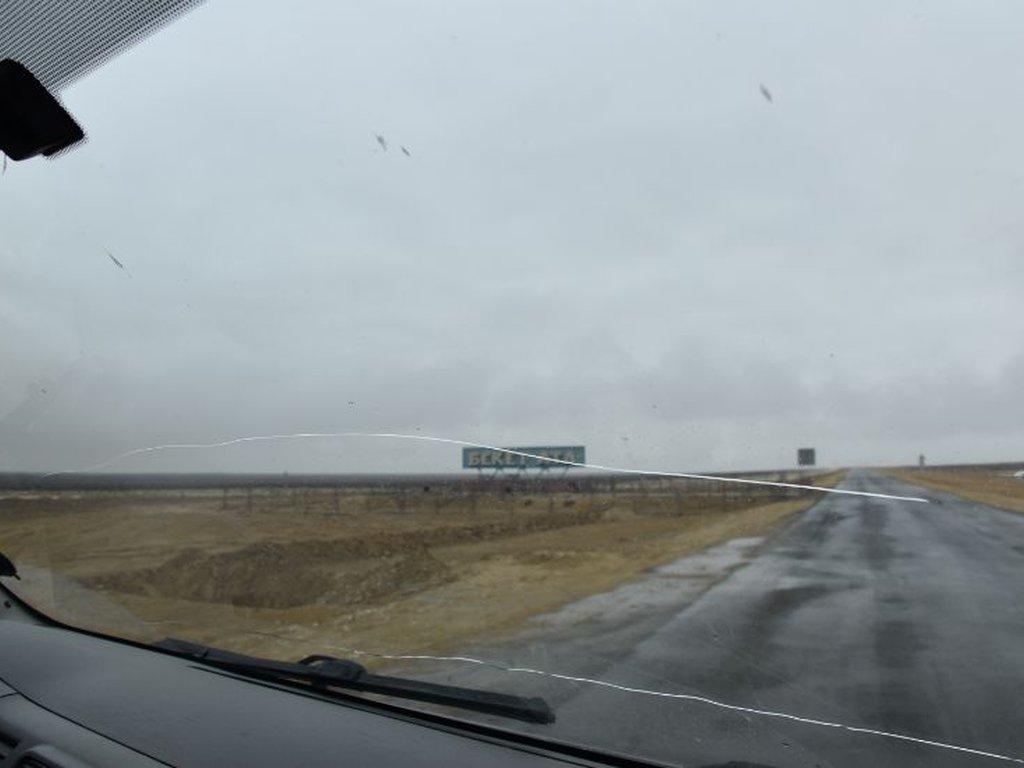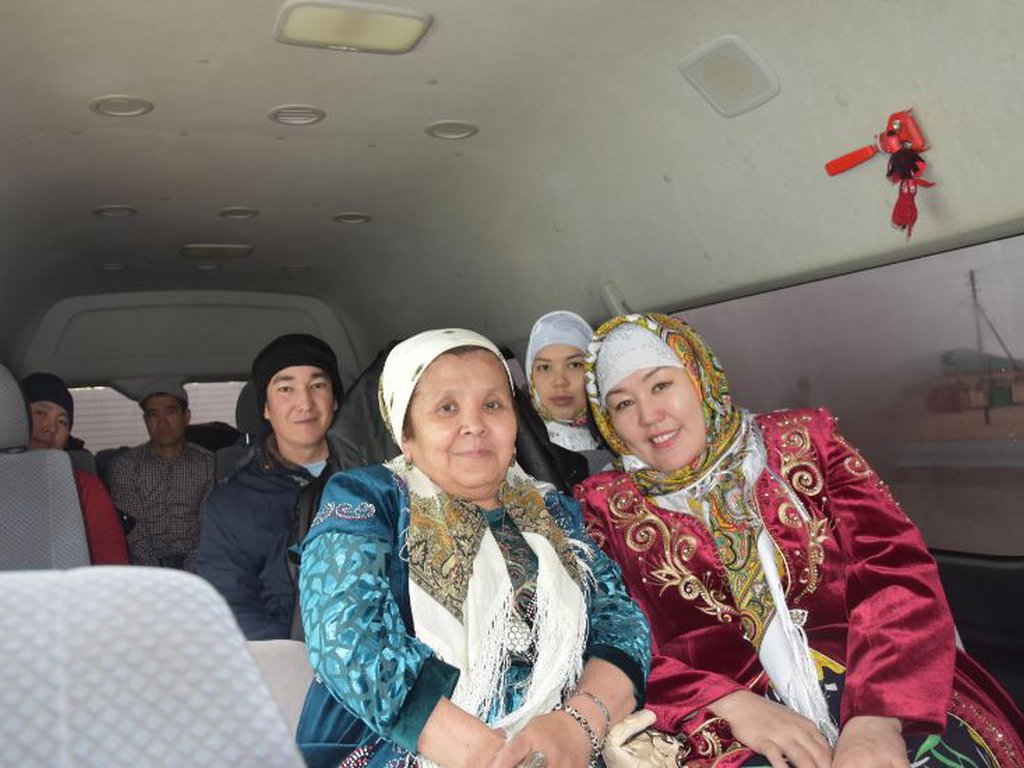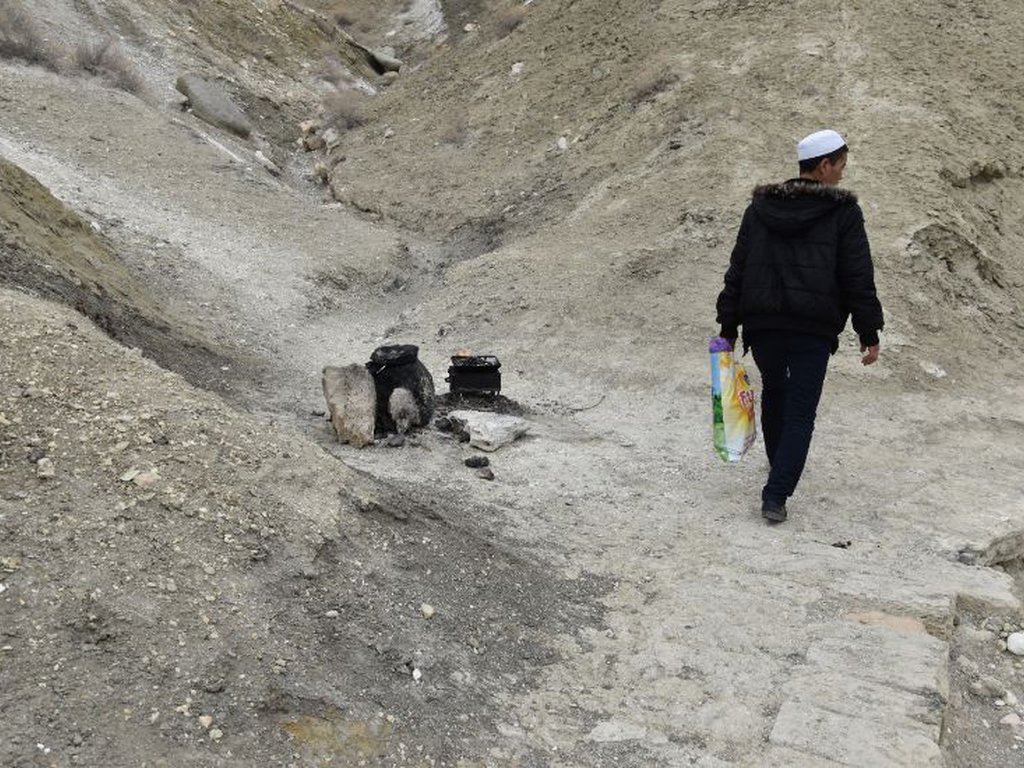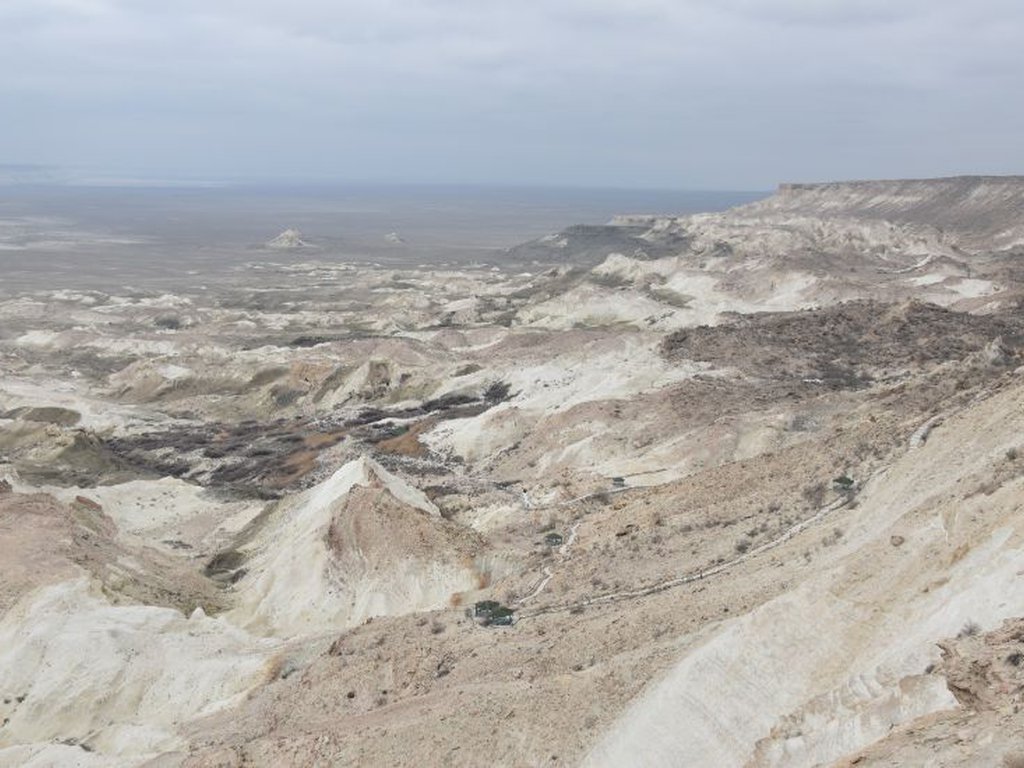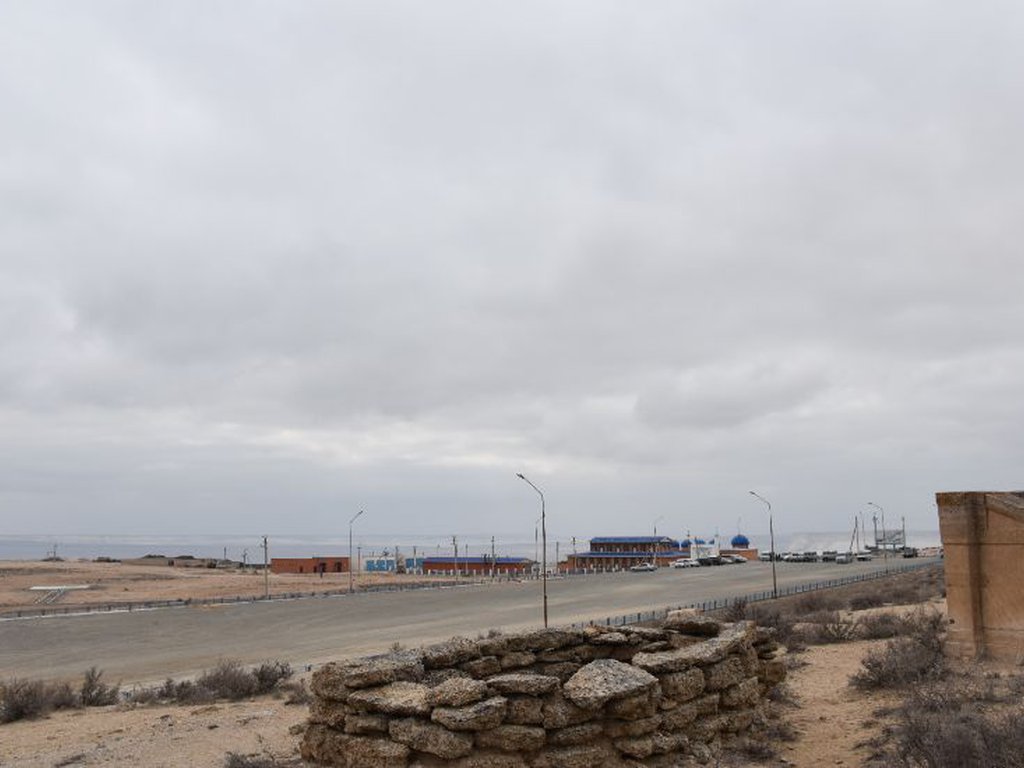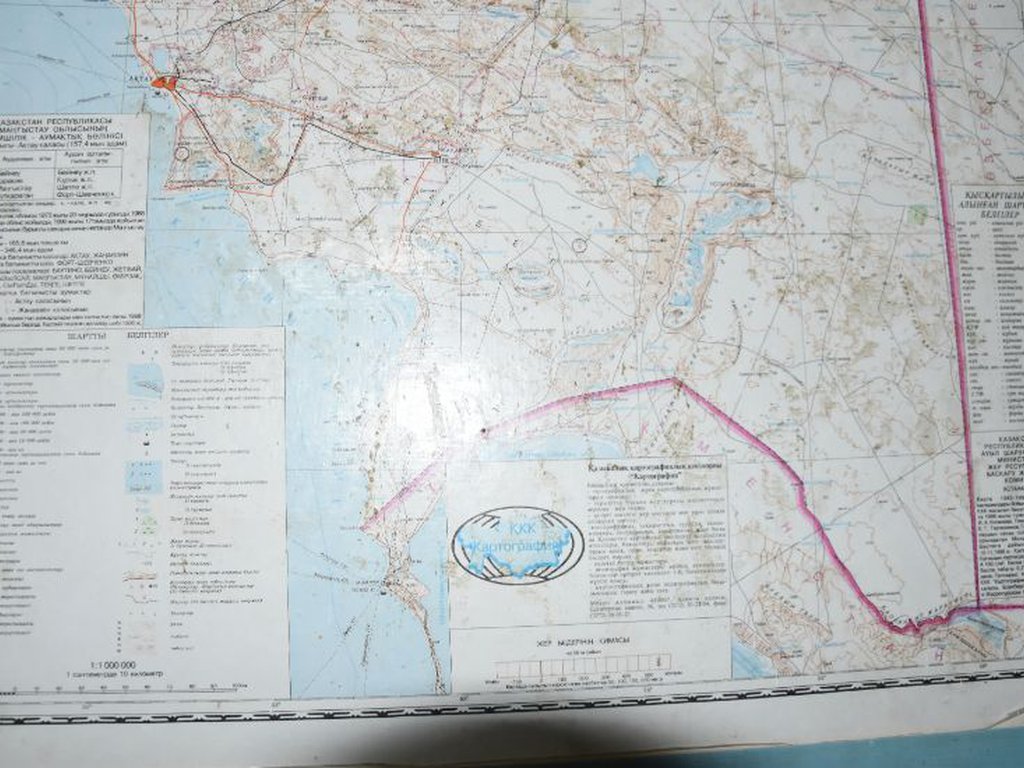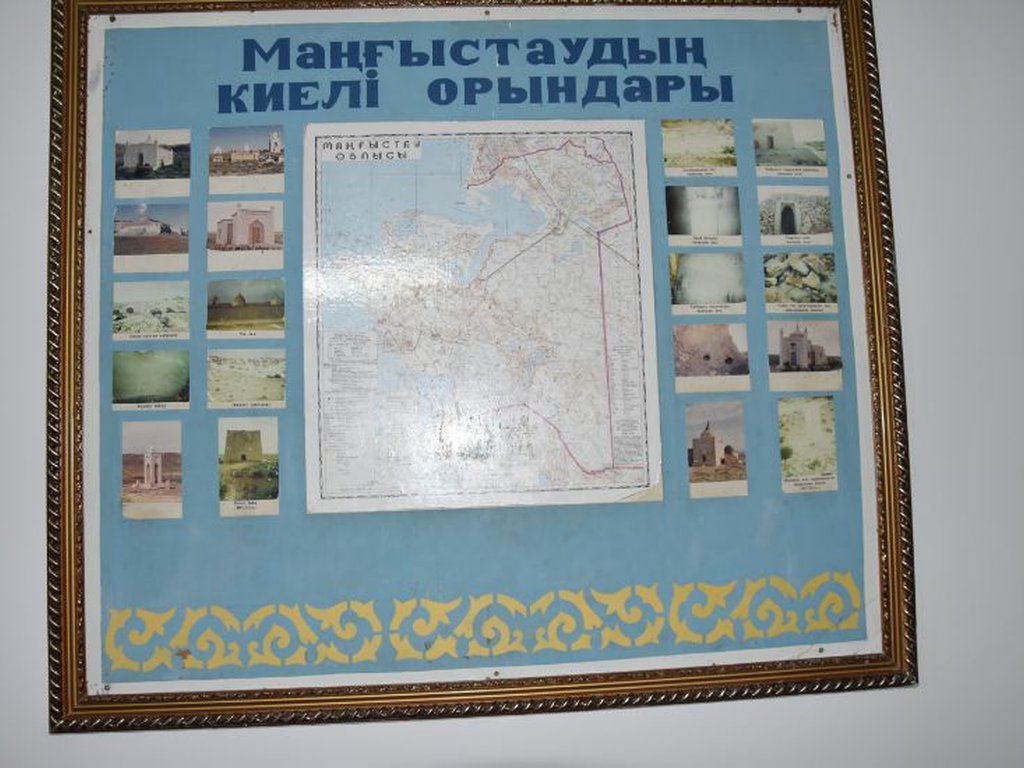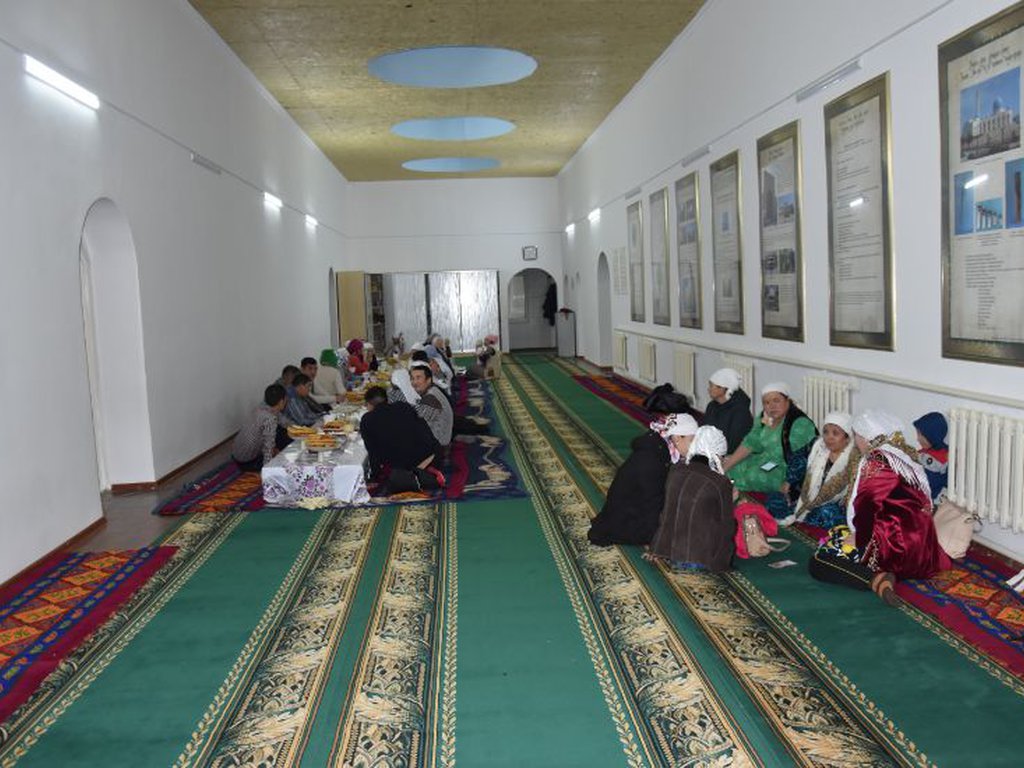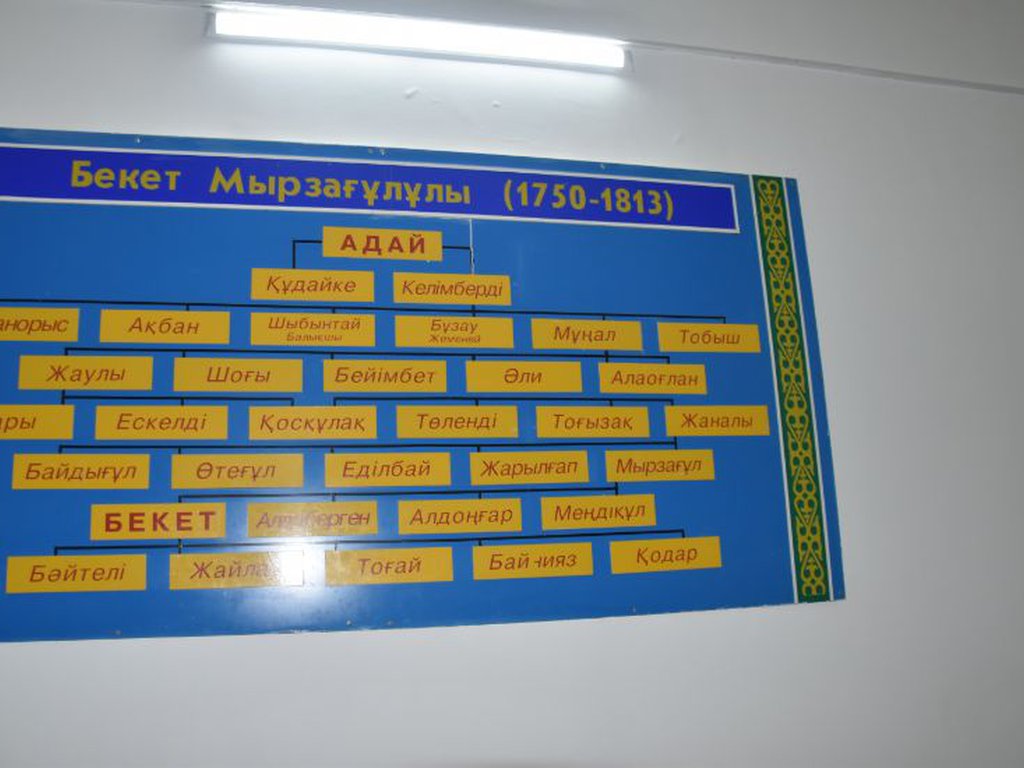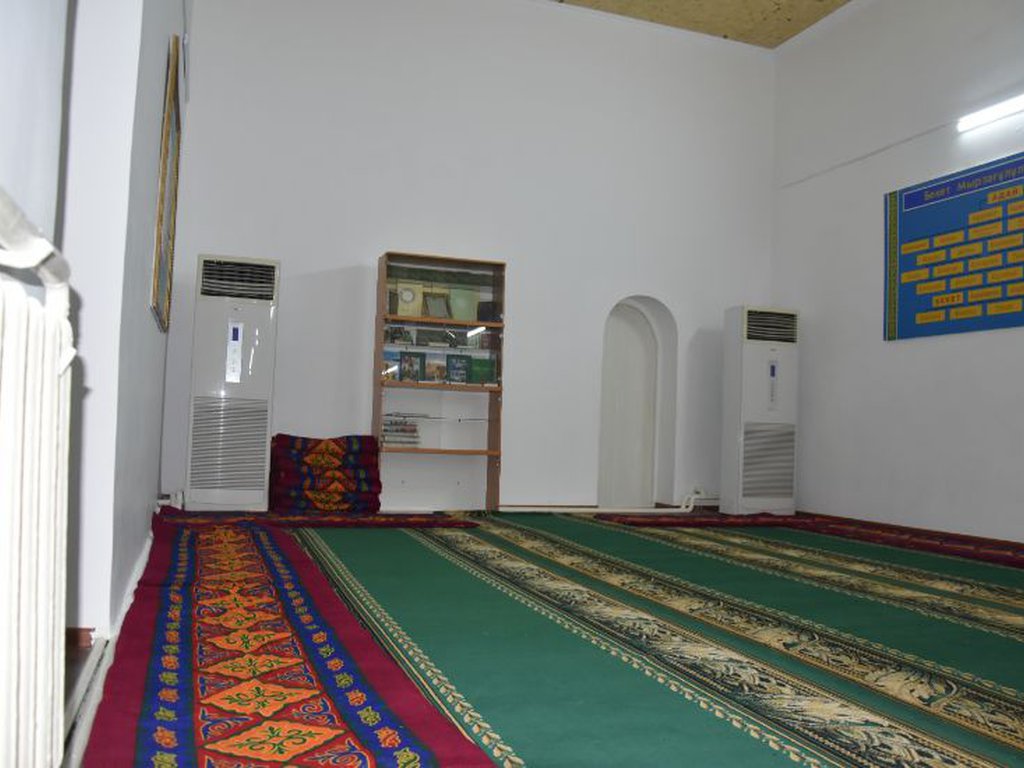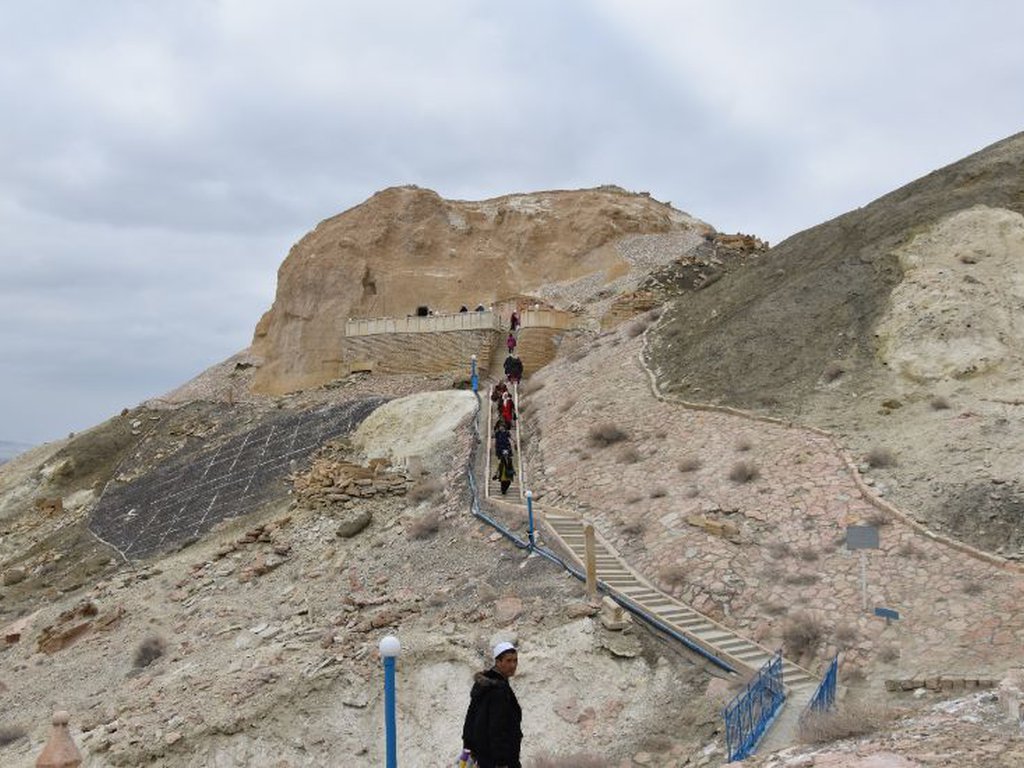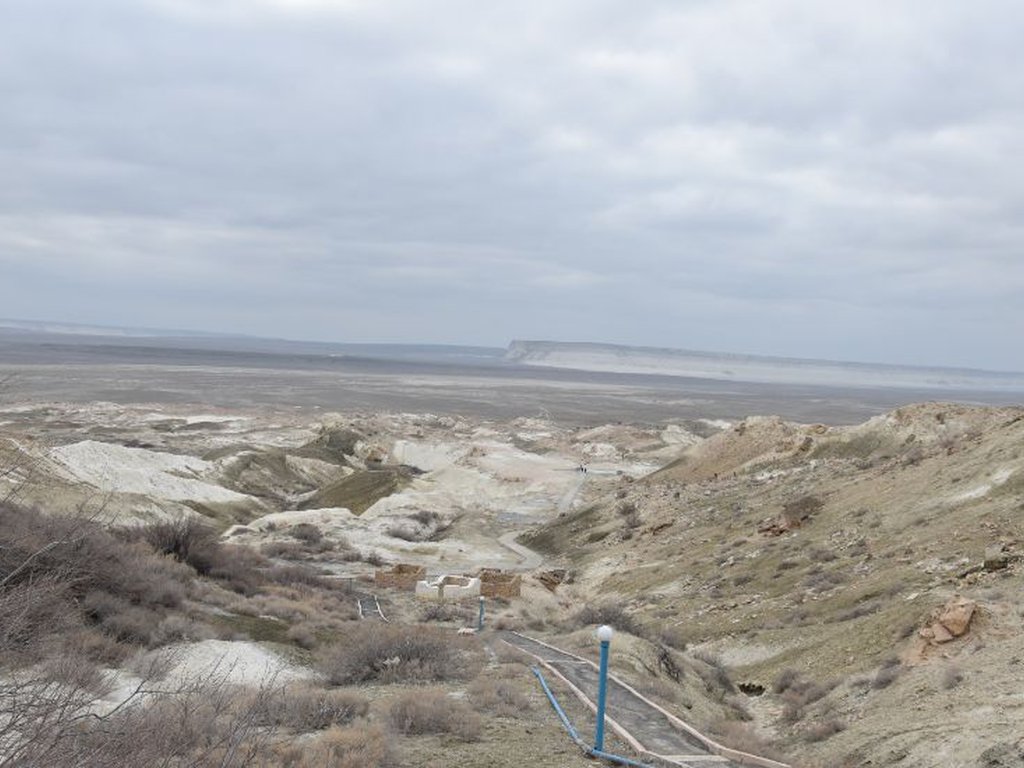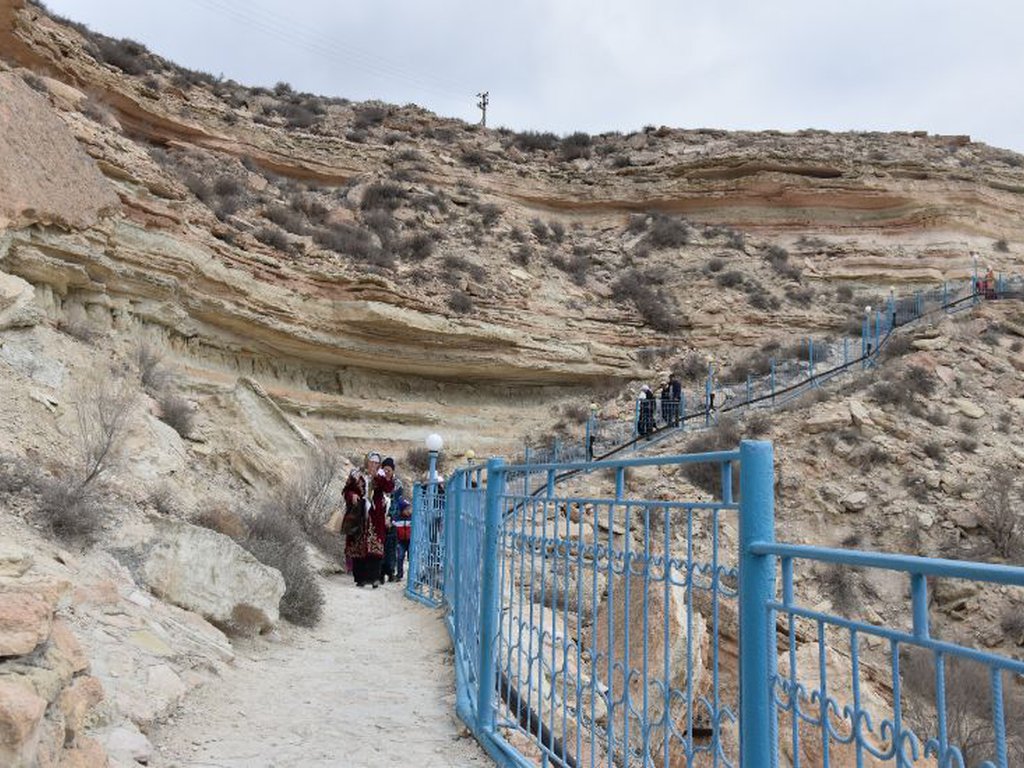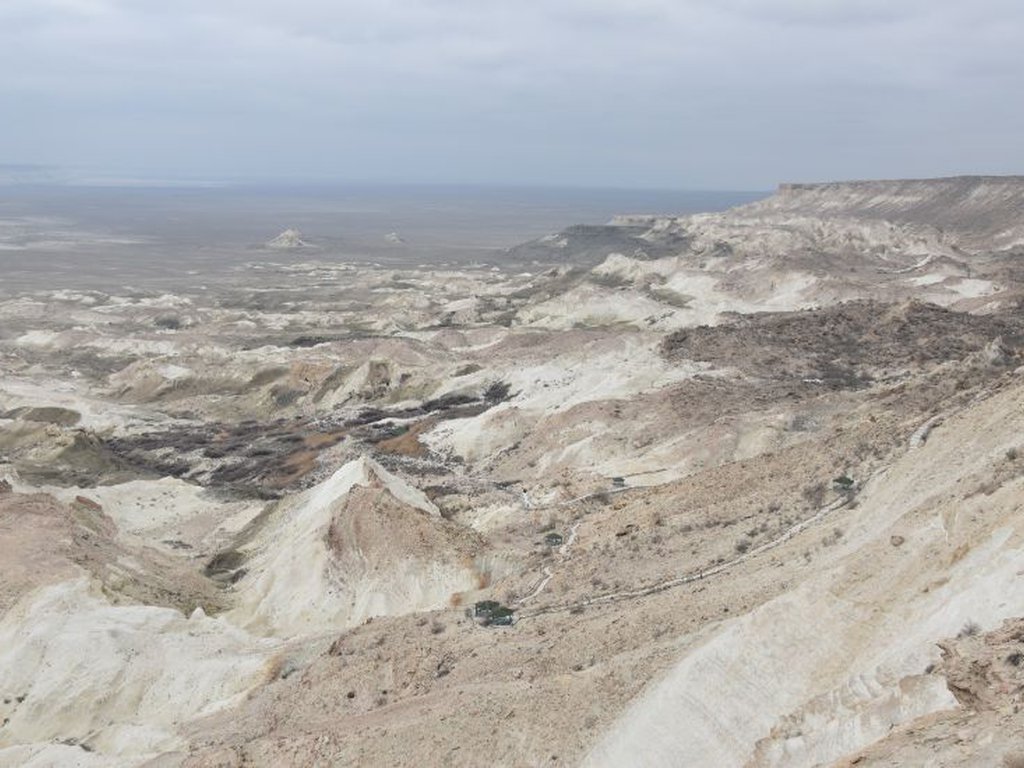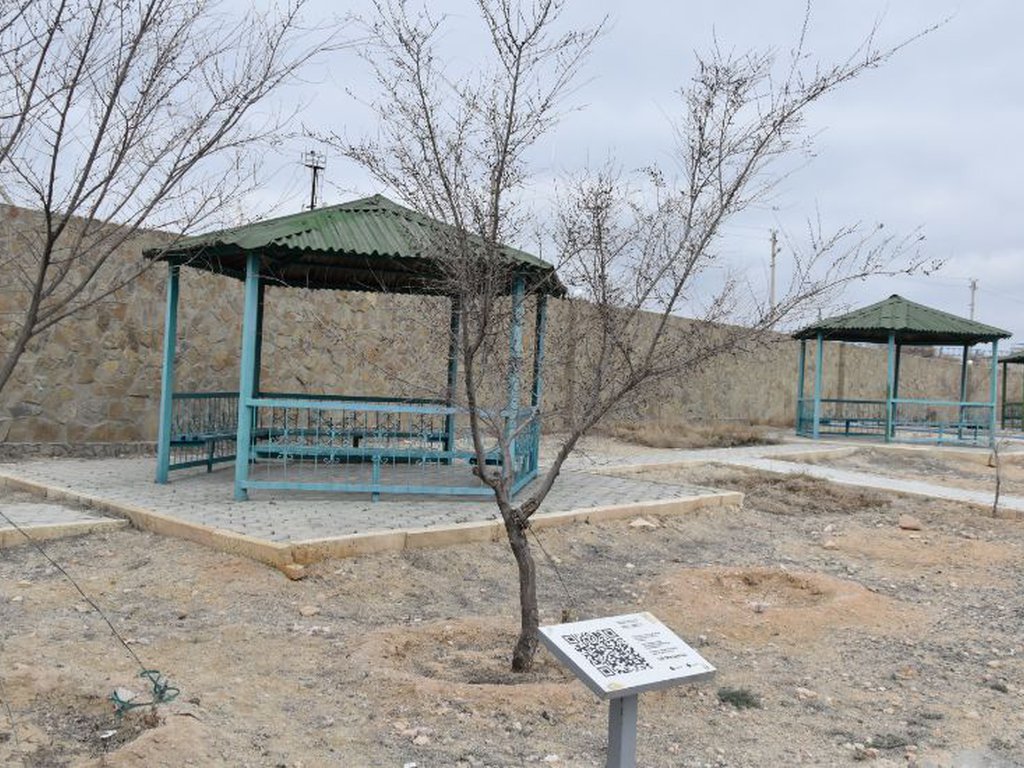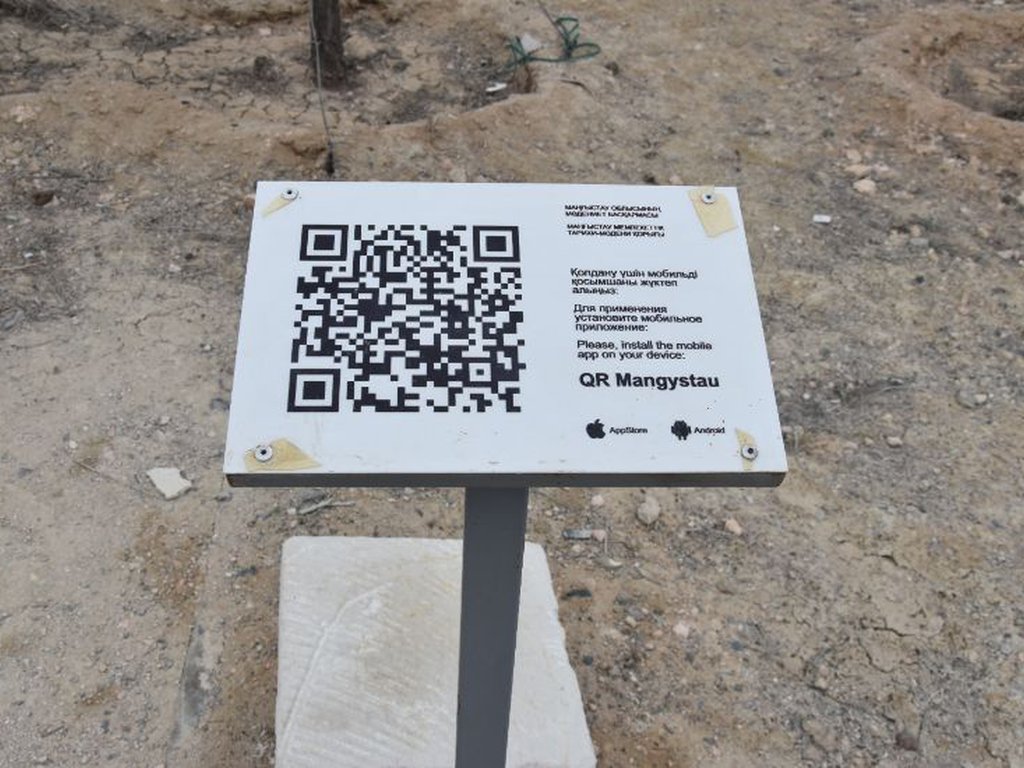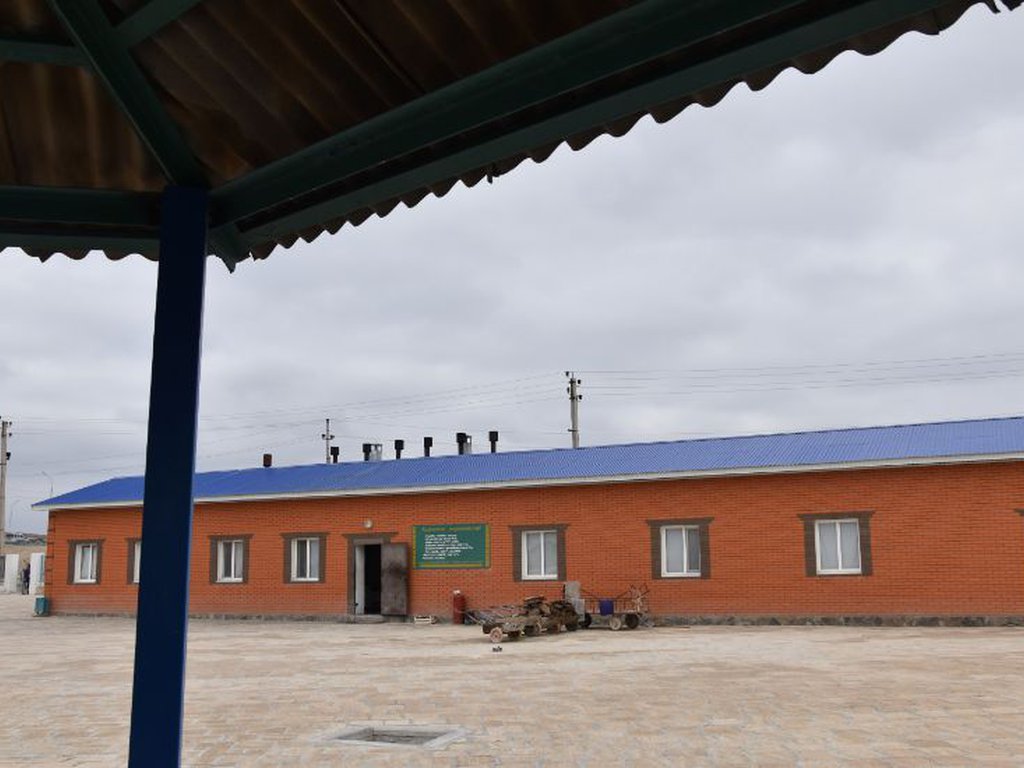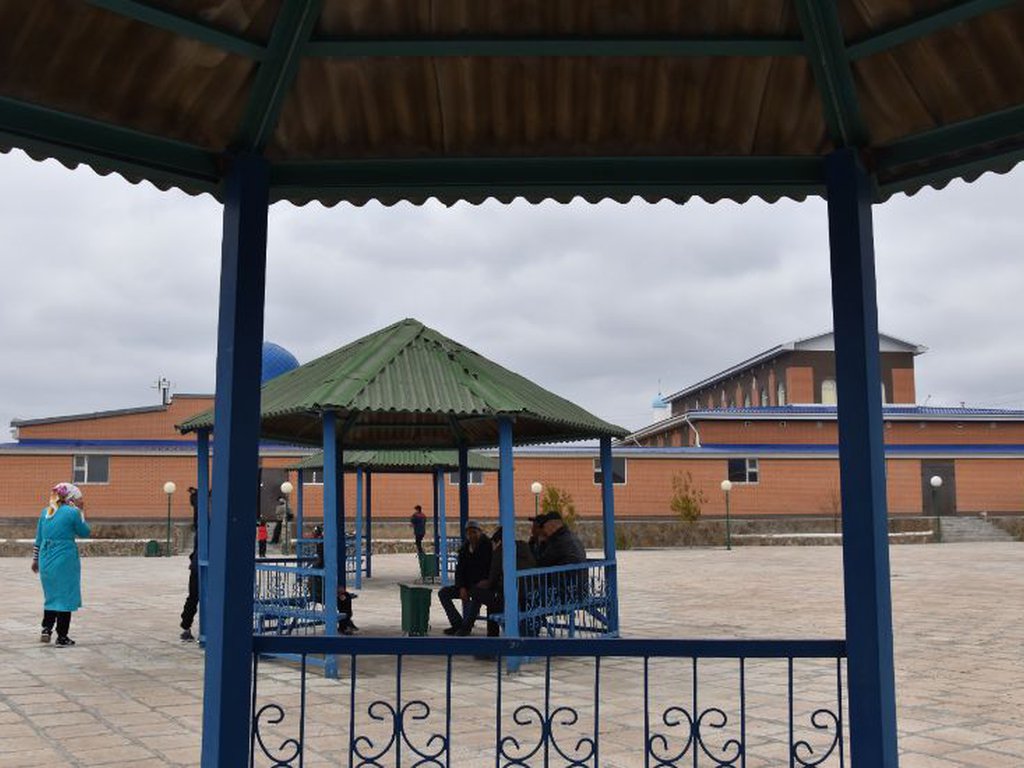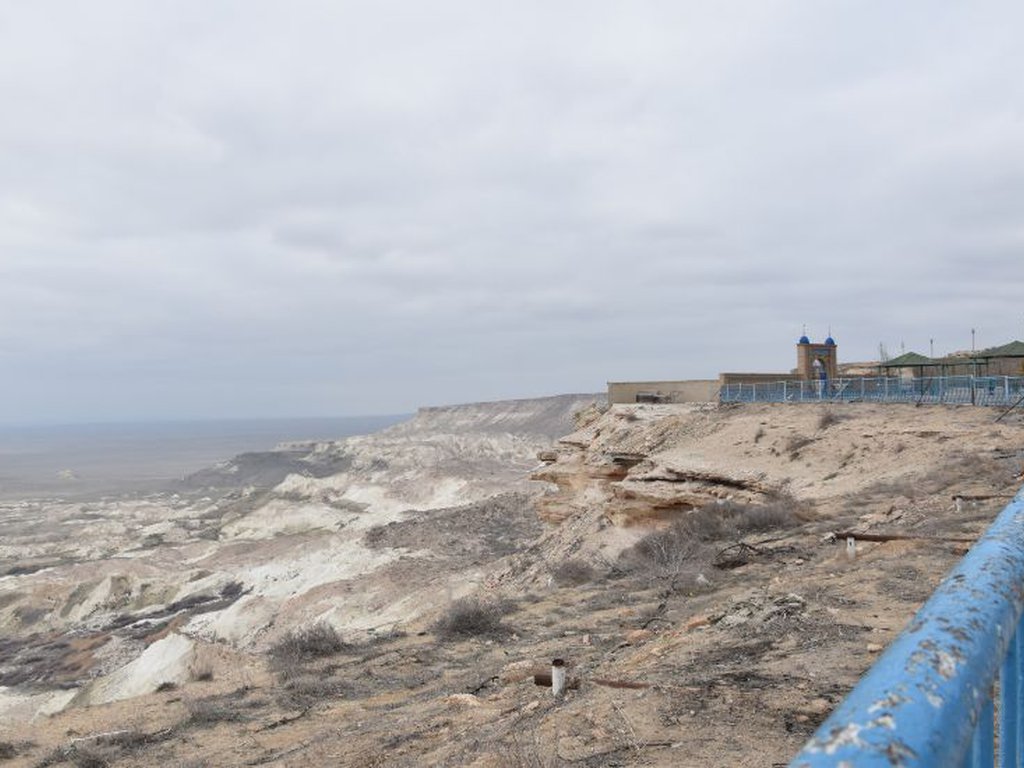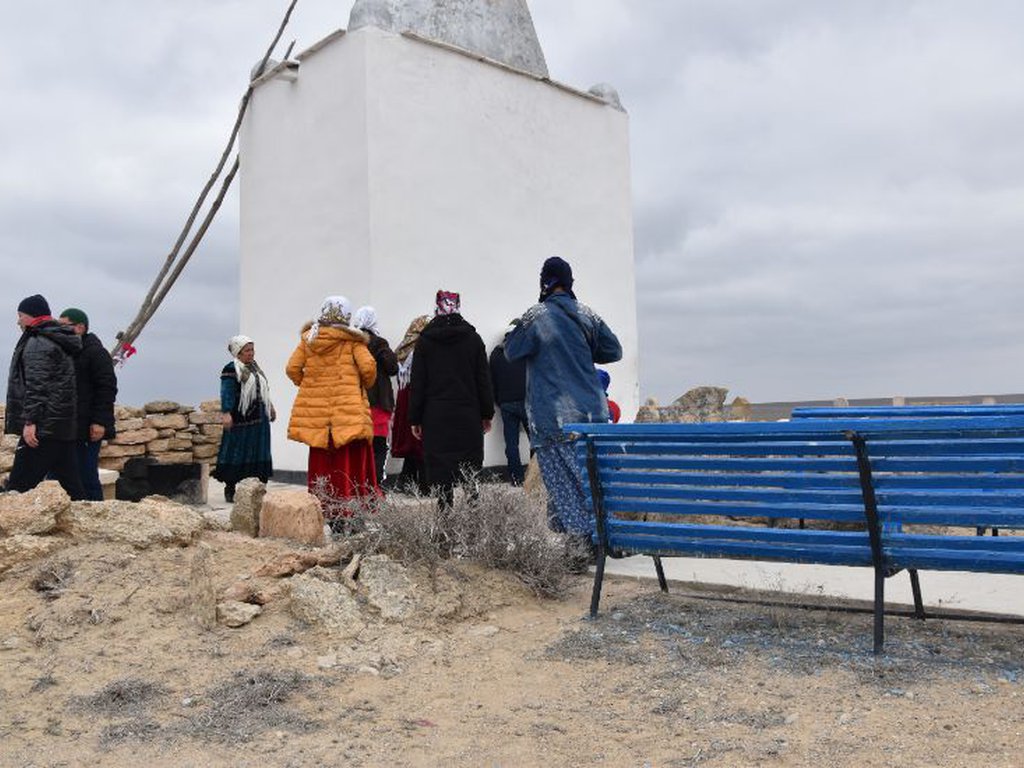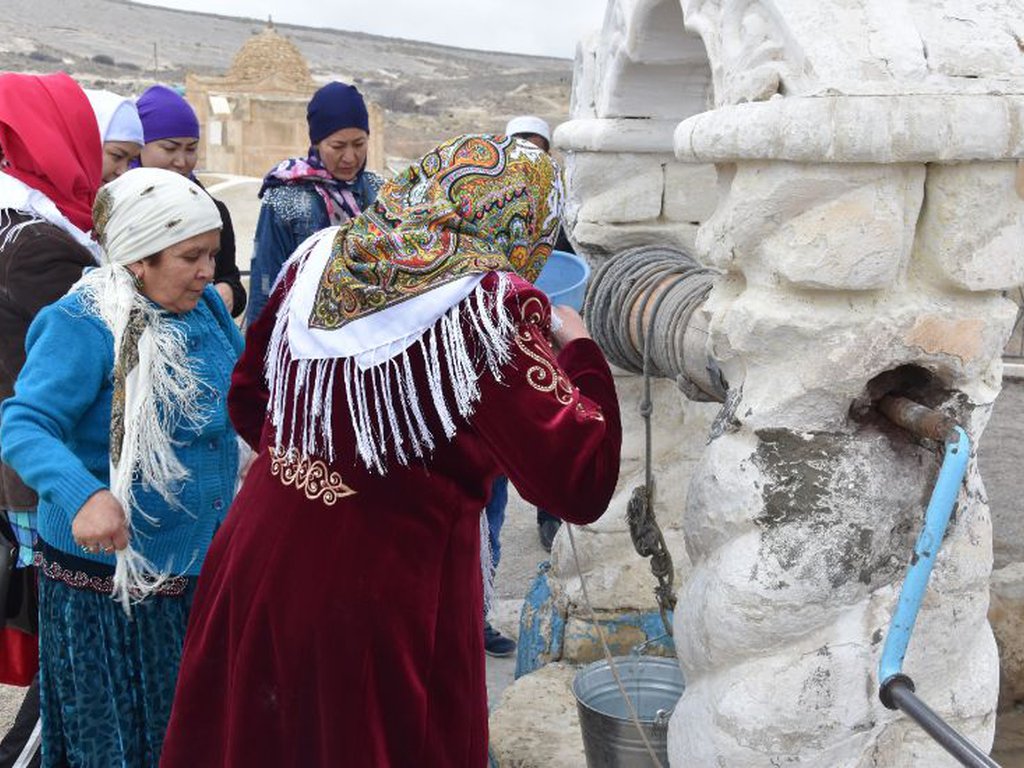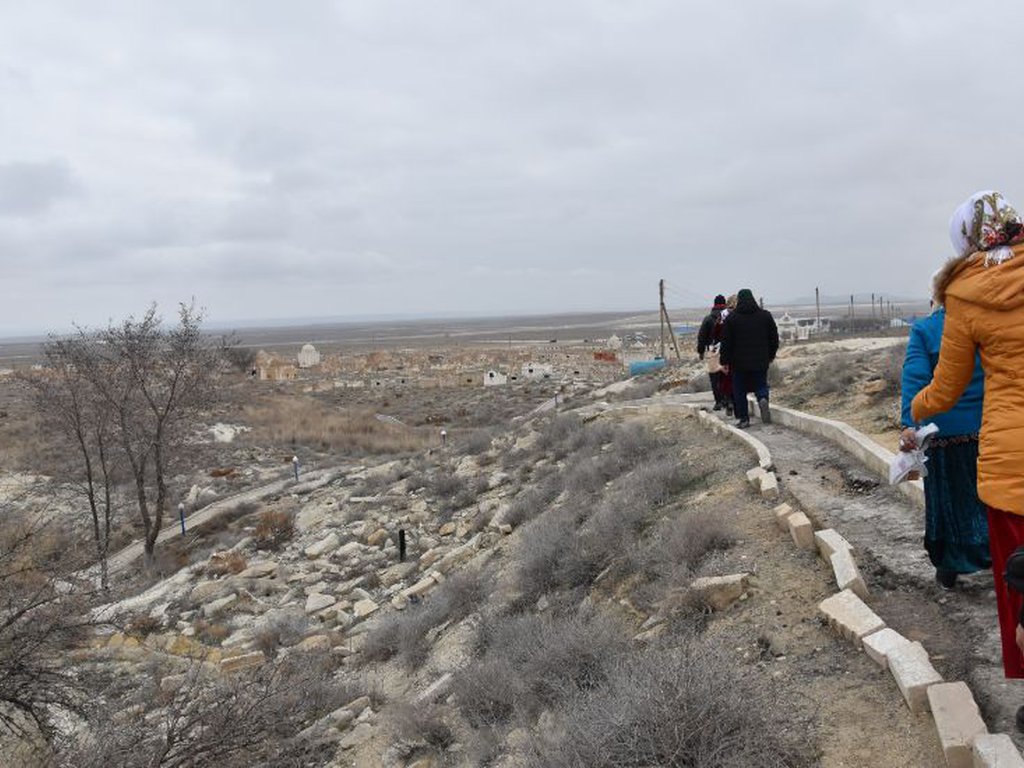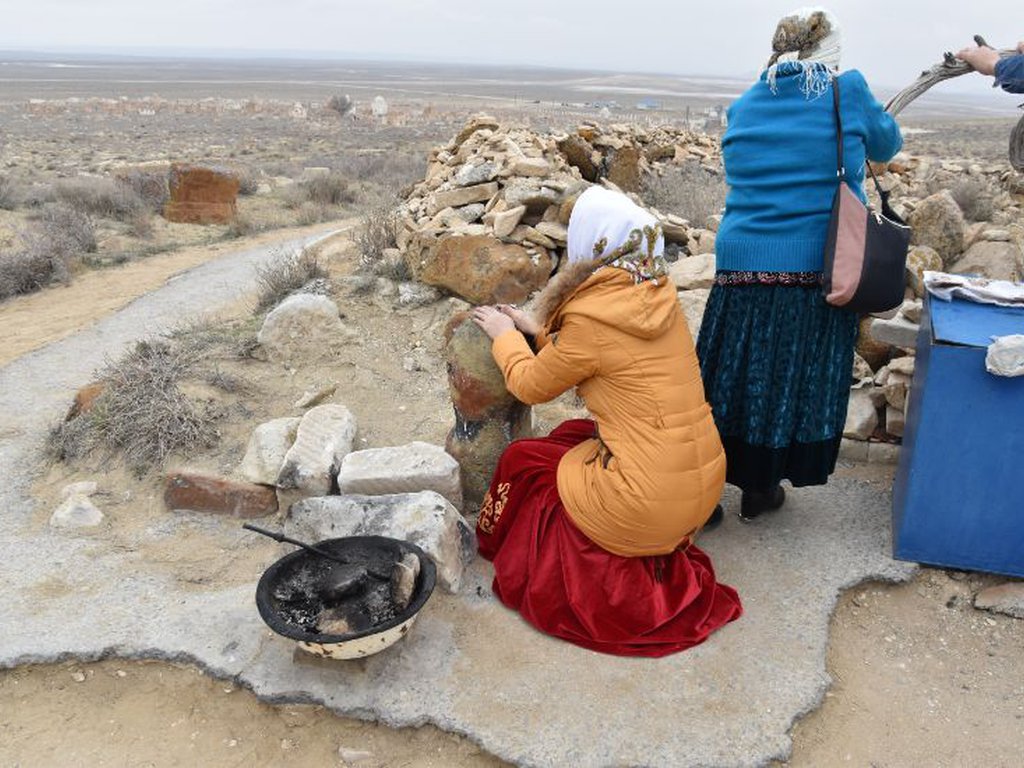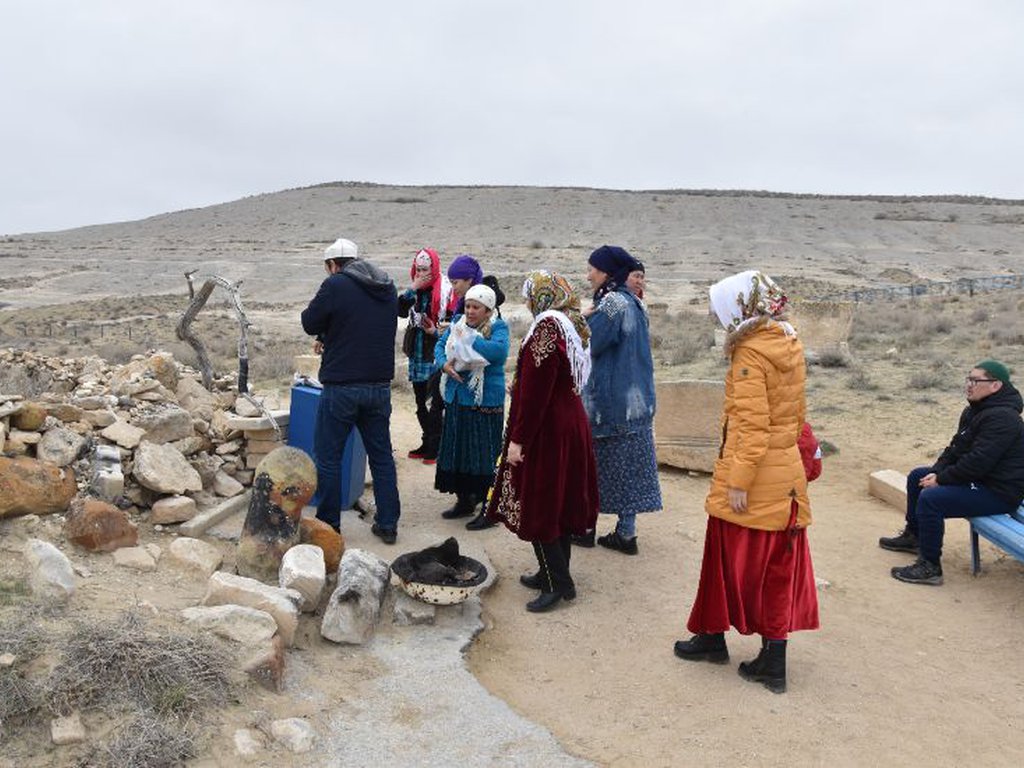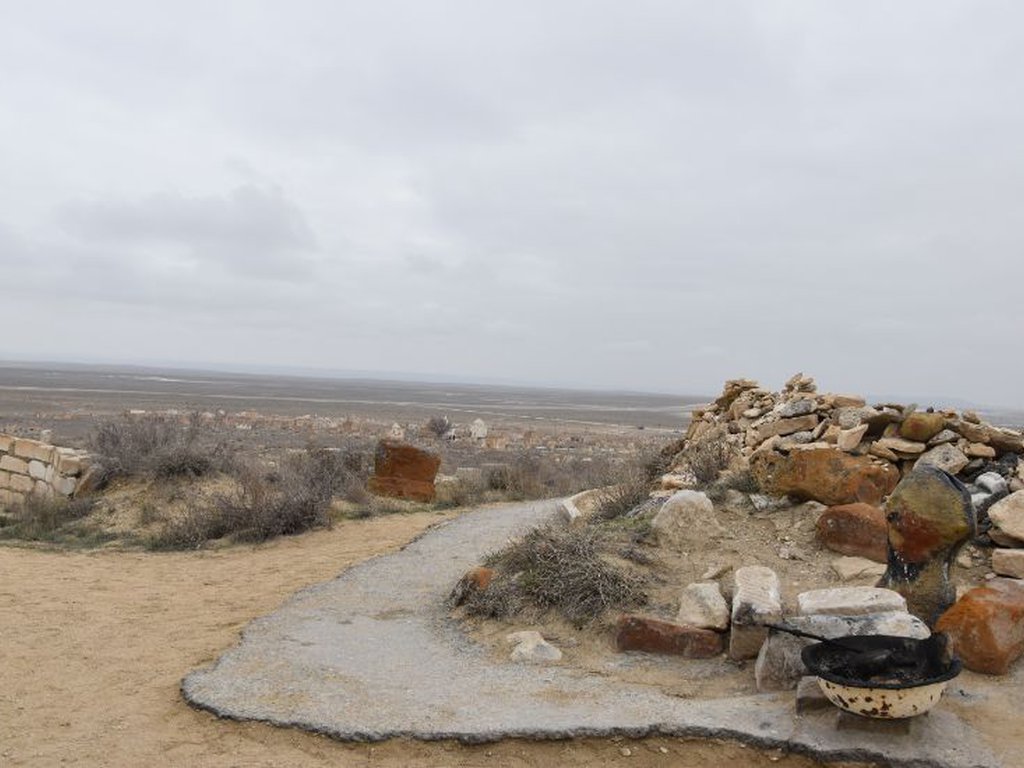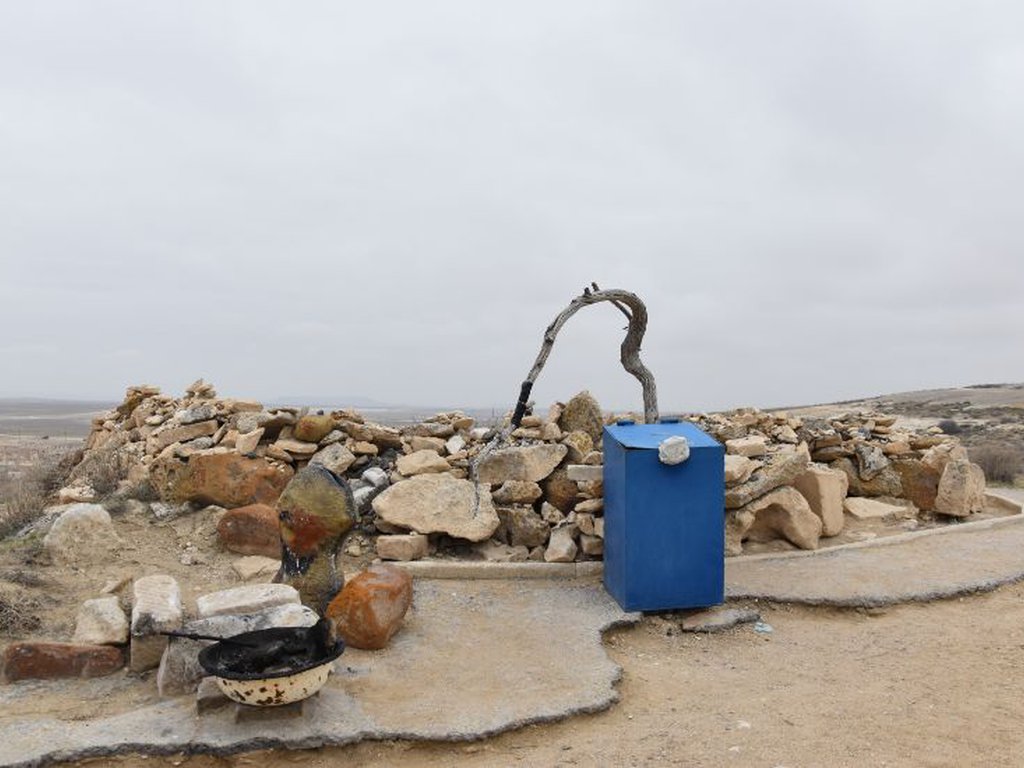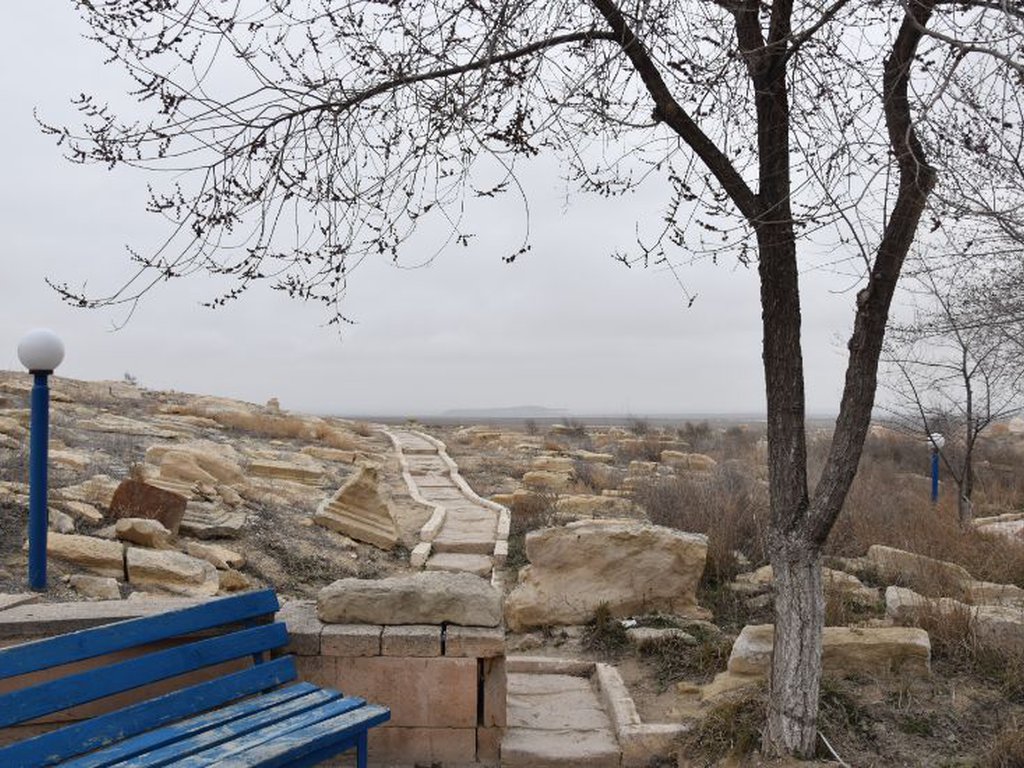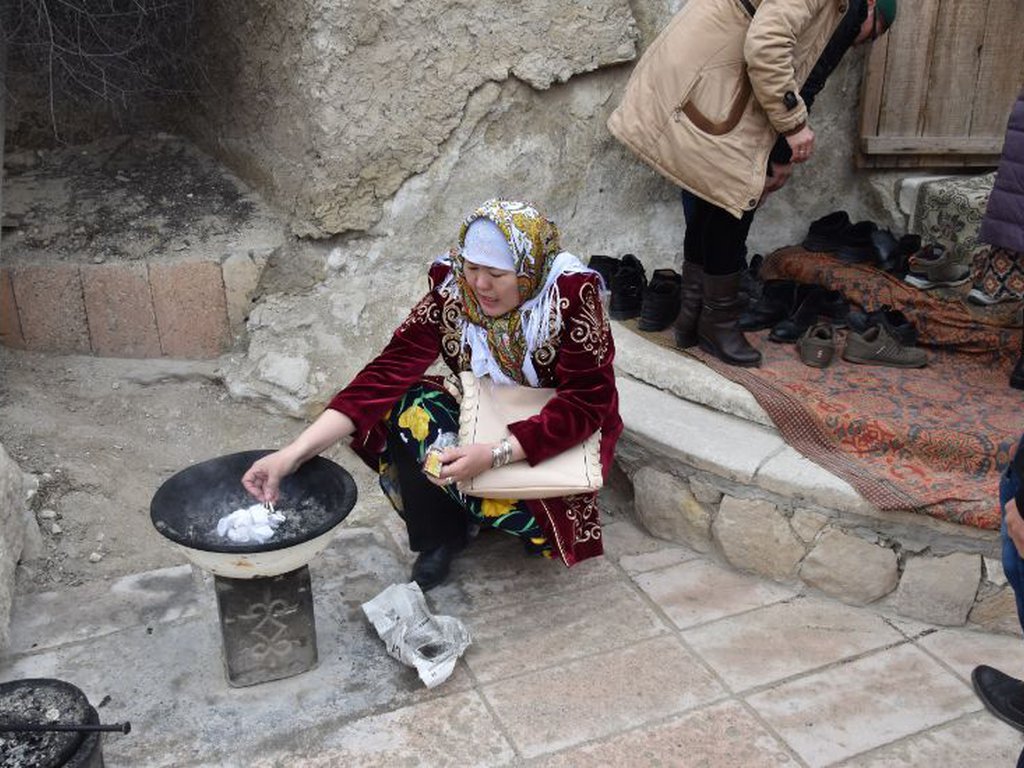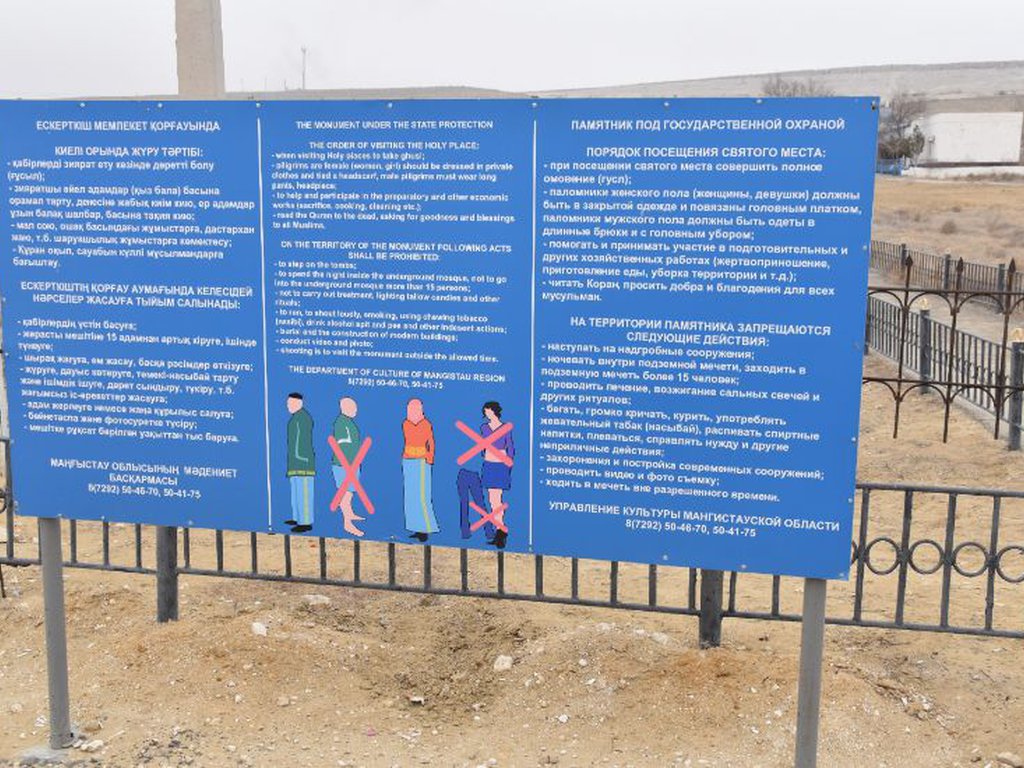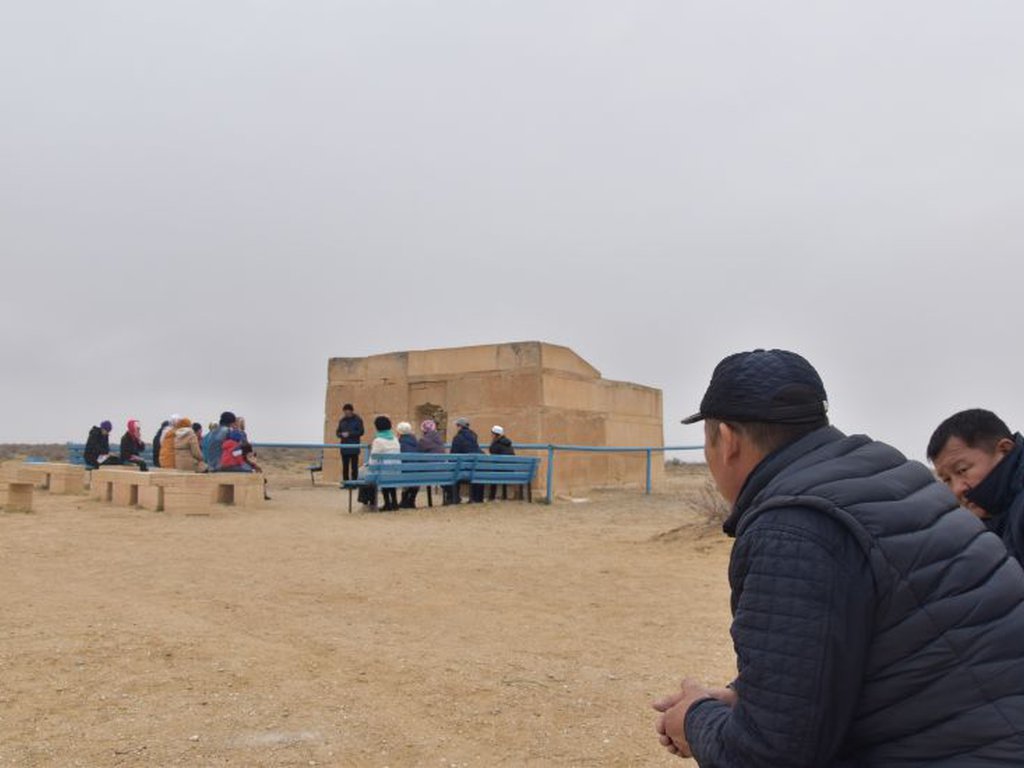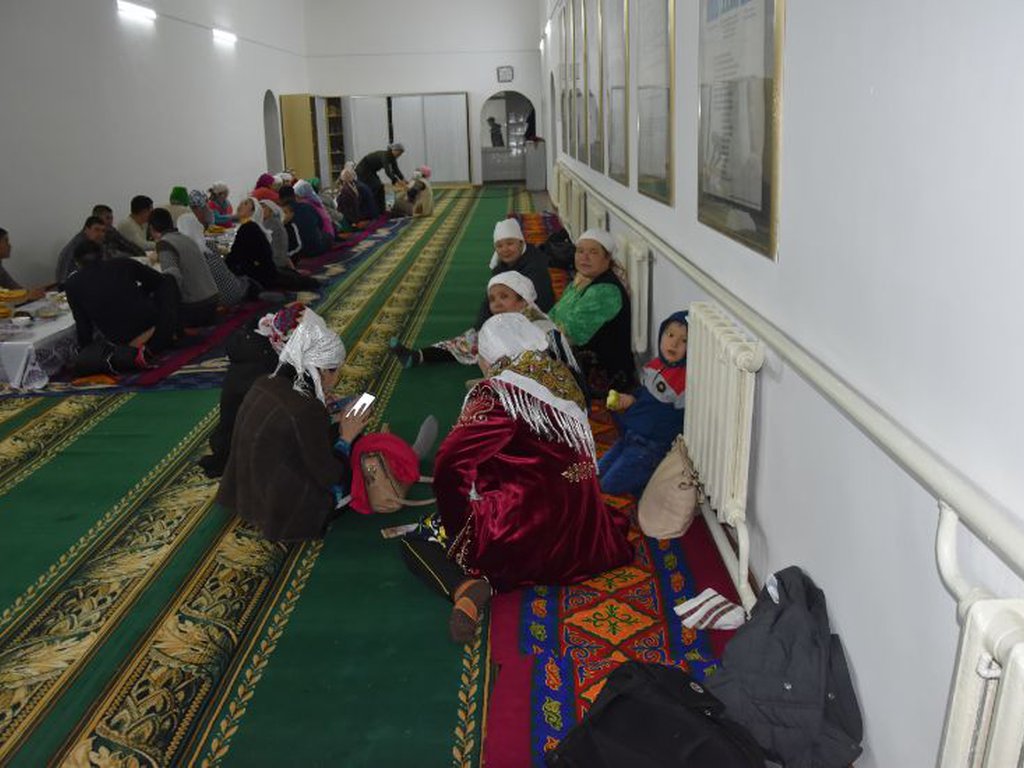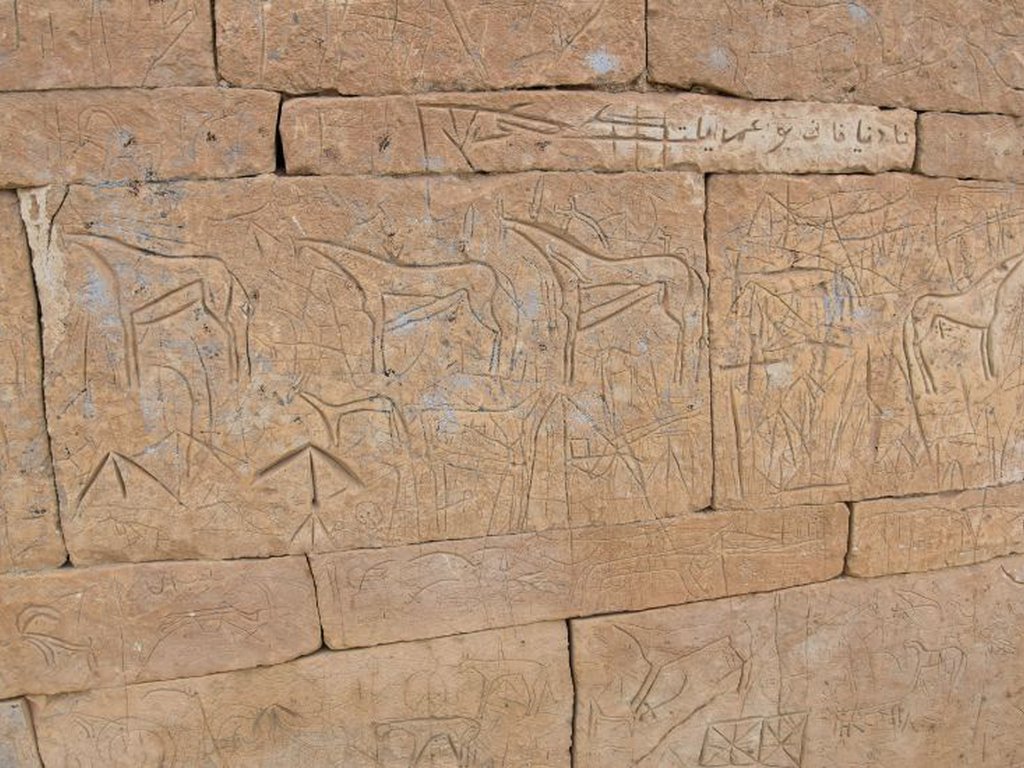Beket-ata Mausoleum in Oglandy. Паспорт объекта

Full description
Name: Mausoleum (mazar complex) of Beket-ata in Oglandy (Kaz. Beket-ata Oglandyda)
Site type: Former mosque founded by Beket-ata and became his mazar
Founder: Beket Myrzagyluly (1750-1813), also known as pir Beket or as Er Beket, was from the Kazakh clan Adai, which was part of the Bayuly confederation of the younger Kazakh zhuz (1). The younger zhuz officially recognized Russian citizenship in 1731. In 1748, the translator of the Ambassadorial order and the Russian envoy of Tatar origin Tuklu Mukhamed Tevkelev already mentioned the Adai clan as one of the branches of the Bayuly tribal confederation. Becket's personality became so important to Adai that his name became their war cry or ‘uran’. Before the use of the war cry "Beket", as Abalanova reports [2, p. 211], Adai used ‘Tegeland’ uran. Nowadays, the significance of Beket-ata cult is fixed at the official level. In 2019, the 200th anniversary of this saint was celebrated as an event of national importance [3].
Genealogy (shezhire) of Beket originates from the legendary founder of Adai tribe - Adai-ata. Beket's family tree looks like this: 1) Adai-ata, 2) Kelimberdy, 3) Munal, 4) Zhauly, 5) Koskulak, 6) Zhanal, 7) Myrzagul, 8) Beket [4], [5]. [6]. In the pilgrimage house (ziaratkhana) of Beket-ata in Oglandy, a large wall poster for the attention of pilgrims demonstrates Beket's genealogy, represented by a white tree. For pilgrims, this family tree is a visual reminder of the status and origins of Beket-ata.
According to some written sources, such as "Khalvat-i-Sufiya", translated into Russian by Babadjanov, Beket was a student of Muhammadjon Bakirgani (Kazakh Bakyrzhan), an ulam and a Sufi pir from Urgenchi, who had disciples and followers among the Kazakhs of Mangistau (4) ... Beket's travels and studies in the Khiva madrasah were not unusual for that time. It was a tradition for nomadic Kazakhs to study in sedentary religious centers of Central Asia in cities such as Khiva or Samarkand. Thus, in the Tatar manuscript "Tarikh-i-Barangavi", compiled by Ahmad b. Hafiz al-Din al-Barangawi, it is reported that al-Barangawi met with Kazakh students in Samarkand (5). The Khiva madrasah historically served as an educational center for the Kazakhs in the Mangistau region.
The influence of Beket Ata is associated not only with Bakirgani, but also with another religious leader of the region - Shopan-ata, who, according to oral tradition, through a dream, dedicated Beket-ata to awliya and directed him to the path of Islamic holiness. This kind of spiritual initiation, or uvaysi, is a well-known Central Asian religious practice. Therefore, a modern pilgrimage to the places of Beket-ata is inseparable from a visit to the shrine of Shopan-ata.
Religious education and uvaysi initiation are closely related to each other. According to manakib Amirkhanov, at the age of 14, Beket asked his parents to allow him to study in a madrasah, and they easily allowed him to do so. Before a long trip to the madrasah, Beket decided to receive a blessing from the spirit of Shopan-ata. To this end, Becket went to the Shopan-ata temple, where he spent four nights. On the fourth evening, Shopan-ata appeared in Beket's dream and, according to Amirkhanov, uttered the following words: “The dead spirit of the ancestors (aruach) could not be a feast for a living being. Go to Khiva. In the Bakyrzhan-Khodja madrasah [Mukhammadzhon Bakirgani - UB] there is an alima and a man with a large casiet [holiness - UB]. Stay close to this person. Your Burak (Pirak), who will take you to Khiva, is already waiting for you outside your home” (6). It goes on to say that when Becket left the house, he saw that Pirak was really waiting for him at the door, and a few seconds later Pirak moved Becket to Khiva. Bakyrzhan was already waiting for Beket and sent him to Shergazi madrasah. This piece of hagiography contains at least three or four important elements. First, we see the presence of a sacred Khoja - the figure of Bakirgani, who in a sense was “chosen” by the spirit of Shopan-ata. Therefore, there are two ways of blessing - through the spirit of uvaysi and through a living feast are somehow interconnected. Secondly, the spirit of Shopan-ata came to Becket through a dream, or ayan. Hermansen notes that in the Islamic religious tradition "... a significant role is assigned to the content of dreams as a reflection of spiritual truth and the truth of the real world, and in establishing a connection between everyday reality and another dimension, often explained as gaib, that is, an absent or invisible kingdom." (7). In the context of Kazakh religiosity, according to Privratsky, ayans play an important role. This Arabic term means personal revelation through sleep. This practice "... is steadily preserved in the Kazakh religion as a manifestation of the illusionist tradition of the Sufis" (8).
The figure of Beket-ata is very complex, on the one hand, he is presented in oral materials not only as an awliya or a saint, but at the same time he (Beket) is presented as a tribal leader and warrior, like Er Beket. In ethnographic materials, Becket is even presented as the leader of the tribal militia and participation in raids on neighboring groups of nomads.
Time and circumstances of foundation: The mosque, according to local ethnographic legends, was carved into the rock by Beket-ata and his followers during the life of this saint. A. Amirkhanov and R. Kosbarmak in their biographies (manakibs) about Beket-ata mention one hardworking builder of a mosque named Baisal from Adai clan of the subgenus of zhemen and bokken tribe. Baisal, according to the narrative, at the age of 54 worked diligently on the construction of the mosque in Oglandy. Beket-ata spoke warmly about him and predicted that good news would await Baisal when he returns home. After Baisal returned home, his wife gave birth to a child who was named Mynkisi and who later became famous as a virtuous and holy person. The choice of the mosque, which became the mazar of Beket-ata, is also shrouded in legends. In these legends, a synthesis of many Islamic traditions is clearly manifested. According to manakib Amirkhanov, Beket's spiritual teacher in Khiva (apparently, pir or ustaz Muhammadjon Bakirgani) threw his staff or asu into the air, which mystically ended up in Mangistau. In the Sufi tradition, personal items of a pir or ustaz (such as a staff, clothing, belt, turban) are sacred and play an important role. Similar stories circulate throughout Central Asia and are present, for example, in the tradition of Khoja Ahmad Yassawi.
According to ethnographic materials, Beket was destined to find a staff or an asu, that is, to become a feast, but not without the help of a certain Turkmen shepherd boy (in Turkmen oglan - boy, adolescent) or, according to another version, an adult Turkmen shepherd named Oglan. The shepherd Oglan, after a short argument and trial, recognized Becket's right to the asu and they became friends. Now the mazar of Oglandy is located near the parking lot of the sacral complex Beket-ata, which is, in fact, on the top of the mountain, while Beket's burial is at the foot, which is also reflected in modern manakibs (9). Thus, the local narrative linked Beket's status as a pir, or Sufi master, an area called Oglandy and the Turkmen tribes with a Sufi sheikh in Khiva.
After the death of Beket-ata in 1813, his body was buried inside the mosque, and the building became a mausoleum and a place of pilgrimage mainly by representatives of Adai tribe. The compartment inside the mosque, where Beket-ata was buried, was then separated by a wall, where a burial plaque was installed in the late Soviet period or during the independence of Kazakhstan. It is important that after death, Becket's body was shrouded in mysticism, as happens in many other religious traditions. For example, in interviews, residents of Mangistau said that until 1960 Becket's body laid open in front of pilgrims and did not undergo natural decomposition. Only the fear that Becket's relics might attract the attention of the authorities forced the construction of the wall inside the mosque.
Beket-ata occupies a central place in the pantheon of saints in western Kazakhstan.
Period of use: Mazar has been operating since the beginning of the 19th century. It should be noted that at least four mosques on the territory of Mangystau are associated with the name of Beket-ata. During the Soviet period, ziarat continued in a hidden form. According to information from pilgrims, the road to Beket-ata was very bad, and the site was difficult to access for people. Since gaining the independence in 1991, a process of increasing religiosity has been taking place in the post-Soviet space, which also affected the Beket-ata complex and led to an increase in the number of pilgrims and an expansion of infrastructure in the mazar.
Main functions: The sacred site represents a burial inside a rocky mosque at the foot of the mountain, and houses for pilgrims at its top. A mountain serpentine road connects the mosque and ziaratkhana. The mausoleum is a domed building, which consists of three small rooms: a corridor, a room with a burial and a room where additional prayers are held. The burial itself is walled up in the wall and only the tombstone with the name of Becket, the years of his life and the names of descendants are visible from the outside. These gravestones are written in Cyrillic.
Pilgrims reach the burial along the serpentine road along the mountainside. Ziaratkhana and utility rooms are at the top.
According to the information received from the caretakers of the mazars, who are descendants of Beket-ata, and also according to historical materials provided by the museum of Aktau, the sacred complex went through several stages of expansion and improvement of conditions for pilgrims and infrastructure. For example, the serpentine road in the Soviet and early post-Soviet periods was a narrow and dangerous mountain trail. At the moment, the serpentine is a comfortable and wide path, with carved steps, gazebos for relaxation and electric lighting.
Ziaratkhana of Beket-ata is a building constructed by modern materials and red bricks. Ziaratkhana consists of three large parallel rooms, where the central room serves for a ritual meal, and the other two are for prayer and rest.
The Beket-ata complex on Oglandy is the main sacred site in Mangystau. It is worth noting that it is the ziarat for holy places such as Beket-ata, Masat-ata, Shopan-ata and many others is one of the important pillars of local religiosity. The tribal identity of Adays and the veneration of Beket-ata as a spiritual feast are closely interrelated phenomena.
Pilgrims visit Beket-ata mazar complex almost all year round, but the most intense period usually occurs from March to the end of October. In September, on one of the weekends, we counted 150 to 200 pilgrims. In terms of gender and age, pilgrims are represented about the same. In social terms, pilgrims represent different categories. Ethnically, Kazakhs make up the majority of pilgrims, but there were also Turkmens and Karakalpaks (from Uzbekistan), and even representatives of other confessions (Orthodox Christians). The grave of Beket-ata is also visited by citizens of other countries (Russia, Uzbekistan).
In the ziaratkhana, with the help of museum in Aktau, posters with texts and photographs related to the life of Beket-ata were exhibited, which to some extent brings a certain educational moment to the pilgrimage. Offerings in the form of money or sacrificial animals are one of the main sources of income for this property.
The ritual consists of the following parts: departure from Aktau (but the starting point may be another settlement), stop on the way in a store in Zhanaozen and purchasing necessary offerings for the caretakers of sacred places, then stop at the first sacred place - the mazar of “Shopan Ata's son-in-law”, then a long stop at Shopan-ata mazar, during which “Shopan-ata madrasah” is visited, the burial of Shopan-ata himself, his close relatives is bypassed, the ceremony of touching the stone of fertility, lighting an oil lamp or Shirak of Shopan-ata is performed, drinking water from the sacred well of Shopan-ata and stopping at the pilgrim's house for tea. Then pilgrims go directly to Beket-ata mazar in Oglandy. Upon arrival, pilgrims first visit Oglandy mazar, which is located in close proximity to the main parking lot, and then go to Beket-ata pilgrims' house. After the ritual ablution, many go along the stairs cut in the rock down to Beket-ata mazar. The descent takes about one and a half kilometers. There are gazebos and lighting along the way. Not far from the saint's burial there is a sacred spring, where, according to а legend, Beket-ata collected water. Here pilgrims on their way back fill empty bottles and take the sacred, in their opinion, water home. Beket-ata mosque with his burial was carved into the rock on a small rise. Pilgrims wait their turn for up to half an hour or more. After waiting, they go to the burial of the awliya, ask a shirakshy (guardian) to read a short prayer, vilify the shirakshy money and make walk around a small mosque, which consists of three or four small rooms. In one of the rooms there is a dried up tree trunk, which is also considered as sacred. Crawling underneath is a must-have ritual. After the visit of Beket mazar, the pilgrims walk up the path, collect sacred water from the spring and return to the ziaratkhana, where they take a break and drink tea before taking sacred food. Usually, at 6-7 pm, the shirakshi and the staff of the Beket-ata complex, together with some volunteer pilgrims, serve boiled lamb with rice, which every pilgrim should taste. Men and women dine separately by 4 people per meal. In general, the number of pilgrims may exceed 100 people. The meal ends with a prayer from the Koran and the blessing of a shirakshy. Shirakshy is also a representative of Beket-ata clan.
Religion: Sunni Islam, Hanafi madhhab
Main center of attraction: The center of attraction is Beket-ata mazar itself, a sacred water source and ziaratkhana.
Plan: Mazar of Oglandy, parking, ziaratkhana (house for pilgrims), a number of mazars of Adai clan, a kitchen building and outbuildings, a serpentine road to Beket-ata mazar, a holy spring, a helipad.
The nearest settlement: Zhanaozen, Aktau
Road: The paved road from Aktau is in excellent condition. Approximately 70 km from Beket-ata mazar the road changes to a road with rubble.
Investment Recommendations: It is recommended to use part of the ziaratkhana as a museum for pilgrims, where it will be possible to get acquainted with the role of Beket-ata in the religious landscape of the region and Muslim Eurasia in general. It is necessary to improve the condition of the road (asphalt, lighting), to build a hotel for tourists near the sacred complex. Basic amenities are also required along the route
Recommended sources:
Сабитов Ж.М. Генетическая история адайцев//Материалы научно-практической конференции "Новый взгляд и перспективы изучения историко-культурного наследия Мангистау". Актау. 2019. С. 79-88
Абланова Э.А. Сауран айналган Адайлар. Известия ВУЗов № 1, 2010, сс.211-214
Биыл Бекет-атаның туғанына 270 жыл толады. https://www.inform.kz/kz/biyl-beket-atanyn-tuganyna-270-zhyl-tolady_a3606046 (03.08.2020, 10:36)
Babadjanov B. Khalvat-i Sufiha. Ed. Original text, Introduction, translation (in Russian), commenter B. Babadjanov. – In: Muslim Culture in Russia and Central Asia. Vol. 3: Arabic, Persian and Turkic Manuscripts (15th19th Centuries). Edited by Anke von Küegelgen, Ashirbek Muminov, Michael Kemper [Islamkundliche Untersuchungen, Band 233]. Berlin: Klaus Schwarz Verlag, 2000, S. 114-21
Frank, A. А month among the Qazaqs in the Emirate of Bukhara: observations on Islamic knowledge in a nomadic environment. Explorations in the social history of modern Central Asia (19th - early 20th century). - Leiden: Brill, 2013. - XIII, pp. 333
Амирханов А. Бекет-ата. Алматы. 2017, стр. 17
Hermansen Marica K. (1988) Survey article: Interdisciplinary approaches to Islamic biographical materials, Religion, 18:2, 163-182
Privratsky B. Muslim Turkistan: Kazak Religion and Collective Memory. Front Cover. Bruce G. Privratsky. Psychology Press, 2001 – p.74
Косбармак Р. Бекет-ата кереметерi. Алматы, 2015, стр. 153
Photo gallery
Map


